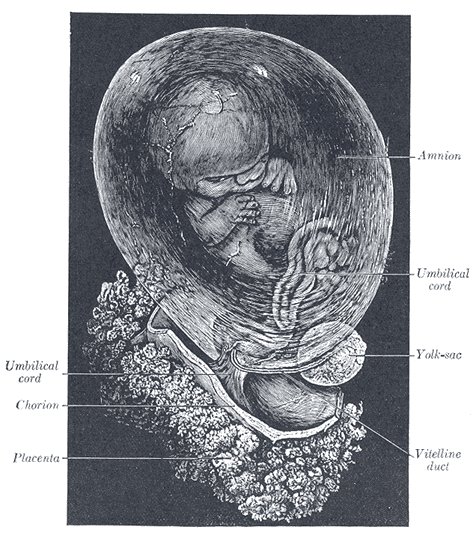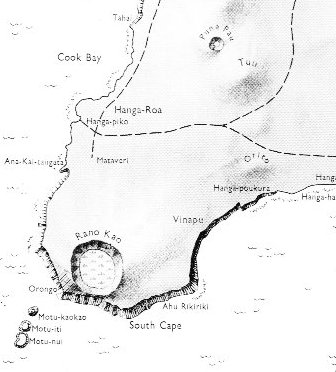Basically the Chained Woman (Andromeda) must have been a visualization of the idea of not moving, i.e. to be as if dead. ... In the morning of the world, there was nothing but water. The Loon was calling, and the old man who at that time bore the Raven's name, Nangkilstlas, asked her why. 'The gods are homeless', the Loon replied. 'I'll see to it', said the old man, without moving from the fire in his house on the floor of the sea. Then as the old man continued to lie by his fire, the Raven flew over the sea. The clouds broke. He flew upward, drove his beak into the sky and scrambled over the rim to the upper world. There he discovered a town, and in one of the houses a woman had just given birth. The Raven stole the skin and form of the newborn child. Then he began to cry for solid food, but he was offered only mother's milk. That night, he passed through the town stealing an eye from each inhabitant. Back in his foster parents' house, he roasted the eyes in the coals and ate them, laughing. Then he returned to his cradle, full and warm. He had not seen the old woman watching him from the corner - the one who never slept and who never moved because she was stone from the waist down.
The return of life in spring was a miracle. Next morning, amid the wailing that engulfed the town, she told what she had seen. The one-eyed people of the sky dressed in their dancing clothes, paddled the child out to mid-heaven in their canoe and pitched him over the side. He turned round and round to the right as he fell from the sky back to the water. Still in his cradle, he floated on the sea. Then he bumped against something solid. 'Your illustrious grandfather asks you in', said a voice. The Raven saw nothing. He heard the same voice again, and then again, but still he saw nothing but water. Then he peered through the hole in his marten-skin blanket. Beside him was a grebe. 'Your illustrious grandfather asks you in', said the grebe and dived. Level with the waves beside him, the Raven discovered the top of a housepole made of stone. He untied himself from his cradle and climbed down the pole to the lowermost figure. Hala qaattsi ttakkin-gha, a voice said: 'Come inside, my grandson.' Behind the fire, at the rear of the house, was an old man white as a gull. 'I have something to lend you', said the old man. 'I have something to tell you as well. Dii hau dang iiji: I am you.' Slender bluegreen things with wings were moving between the screens at the back of the house. Waa'asing dang iiji, said the old man again: 'That also is you.' The old man gave the Raven two small sticks, like gambling sticks, one black, one multicoloured. He gave him instructions to bite them apart in a certain way and told him to spit the pieces at one another on the surface of the sea. The Raven climbed back up the pole, where he promptly did things backwards, just to see if something interesting would occur, and the pieces bounced apart.
It may well be some bits were lost. But when he gathered what he could and tried again - and this time followed the instructions he had been given - the pieces stuck and rumpled and grew to become the mainland and Haida Gwaii ... I have tried to explain this strange story earlier: ... This is the end of the mythical beginning and the story has reached the land where man is living. The fire plow is the typical Polynesian method to create fire, with one stick above and the other flat below: ... Another simple fire making tool using friction is a fire plow. It consists of a stick cut to a dull point, and a long piece of wood with a groove cut down its length. The point of the first piece is rubbed against the groove of the second piece in a 'plowing' motion, rapidly, to produce hot dust that then becomes a coal. A split is often made down the length of the grooved piece, so that oxygen can flow freely to the coal/ember. Once hot enough, the coal is introduced to the tinder, more oxygen is added by blowing and the result is ignition ... If, as I have suggested, light (fire) corresponds to land (meaning either 'land' in the sky or land down on earth), then the method to create land should be to use a pair of sticks. The black stick certainly is the 'female' stick and the multicoloured one the 'male' stick'. When the kuhane of Hau Maka circumnavigated Easter Island she first went along the southern coast, the night side of the island. By naming places she made the island more real, in a way she created the land. Makoi, on the other hand, went first along the northern, sunny, side of the island. Also his namegiving was necessary, and he in a way corresponds to the multicoloured stick ... ... Manuscript E has its own way to tell about '2 sticks': ... The two hulls were no longer kept lashed together (i.e., they were separated for the rest of the journey). Hotu called out to the canoe of the queen: 'Steer the canoe to the left side when you sail in. Teke will jump over on board (your) canoe to work his mana when you sail through the fishing grounds!' Teke jumped on board the second canoe, (that) of the queen. The king's canoe sailed to the right, the queen's to the left. Honga worked his mana in the fishing grounds. (List of five fishing grounds that belong to Hotu and Honga.) Teke worked his mana in the fishing grounds to the left side. (List of nine fishing grounds that belong to Hotu and Teke.) The men on board the royal canoe looked out from Varinga Te Toremo (the northeastern cape of the Poike peninsula). Then they saw the canoe of the queen, the canoe of Ava Rei Pua, as it reached Papa Te Kena (on the northern shore, east of Hanga Oteo). Honga came and gazed in the direction below (i.e., toward the west). He called out to the noteworthy ruler (? ariki motongi) Hotu: 'There is the canoe of the queen! It will be the first one to land!' At this news King Hotu replied to Honga, 'Recite (rutu) ('powerful incantations') as though the ten brothers of the chief (ariki maahu) were one whole (?).' The ten recited with all their might. This is what they recited: 'Let all movement (? konekone) cease!' They recited and sailed on swiftly: Honga, Te Kena, Nuku Kehu, Nga Vavai, Oti, Tive (corrected for 'Sive'), Ngehu, Hatu, Tuki, and Pu (corrected for 'Bu'). He worked mana in the fishing grounds. (Naming of two fishing grounds.) When Hotu's canoe had reached Taharoa, the vaginal fluid (of Hotu's pregnant wife) appeared. They sailed towards Hanga Hoonu, where the mucus (kovare seems to refer to the amniotic sac in this case) appeared. They sailed on and came to Rangi Meamea, where the amniotic fluid ran out and the conctractions began. They anchored the canoe in the front part of the bay, in Hanga Rau. The canoe of Ava Rei Pua also arrived and anchoraged. After Hotu's canoe had anchoraged, the child of Vakai and Hotu appeared. It was Tuu Maheke, son of Hotu, a boy. After the canoe of Ava Rei Pua had also arrived and anchoraged, the child of Ava Rei Pua was born. It was a girl named Ava Rei Pua Poki ...
There were 2 children born here (with their heads first of course):
... The ordinary year in the previous Roman calendar consisted of 12 months, for a total of 355 days. In addition, a 27-day intercalary month, the Mensis Intercalaris, was sometimes inserted between February and March. This intercalary month was formed by inserting 22 days after the first 23 or 24 days of February; the last five days of February, which counted down toward the start of March, became the last five days of Intercalaris. The net effect was to add 22 or 23 days to the year, forming an intercalary year of 377 or 378 days ... From the next glyph (*Ca14-1) to the end of side a there were 29 days, and added to 348 on side b it became 377:
14 * 29 = 406 and 740 - 406 = 334 = 414 - 80 (cfr Ca13-11). The pair of sticks joined together like unseparable twins could have illustrated the square of Pegasus.
... Twins stick together. Twin sticks together:
... 1. Hanga Te Pau, the landing site of Ira and his band of explorers, is the natural anchorage for those approaching Vinapu by sea. The remarkable stone fronts of the ahu of Vinapu are all facing the sea. The explorers landed at Hanga Te Pau during the month 'Maro', that is, June ... 2. The cult place of Vinapu is located between the fifth and sixth segment of the dream voyage of Hau Maka. These segments, named 'Te Kioe Uri' (inland from Vinapu) and 'Te Piringa Aniva' (near Hanga Pau Kura) flank Vinapu from both the west and the east. The decoded meaning of the names 'the dark rat' (i.e., the island king as the recipient of gifts) and 'the gathering place of the island population' (for the purpose of presenting the island king with gifts) links them with the month 'Maro', which is June. Thus the last month of the Easter Island year is twice connected with Vinapu. Also, June is the month of summer solstice [a mistake: south of the equator it is winter solstice], which again points to the possibility that the Vinapu complex was used for astronomical purposes. 3. On the 'second list of place names', Hanga Te Pau is called 'the middle (zenith) of the land' (he tini o te kainga). This may refer to a line bisecting the island, but it can just as easily mean the gathering of a great number (of islanders). The plaza (130 x 130 meters) would have been very well suited for this purpose. 4. The transformation of the 'second list of place names' into a lunar calendar links Hanga Te Pau and Rano Kau. A similar linkage occurs in connection with the third son of Hotu Matua between the 'pebbles of Hanga Te Pau' and his name 'Tuu Rano Kau'. There can be no doubt that Vinapu was dependent on the economic resources of the large crater ...
|
||||||||||||||||||||||||||||||||||||||||||||||||||||||||||||||||||||||||||||||||||||||||||||||||||









